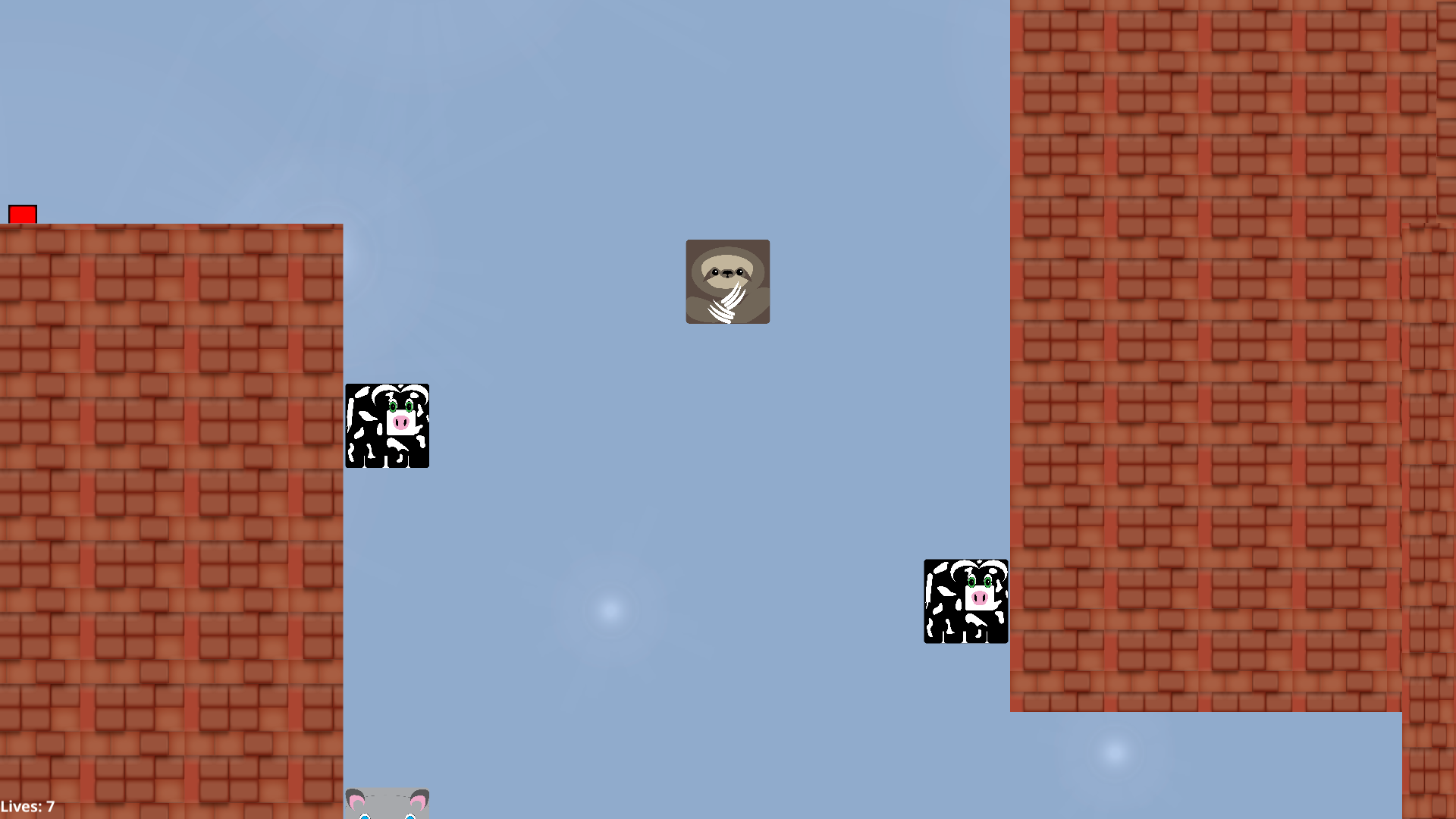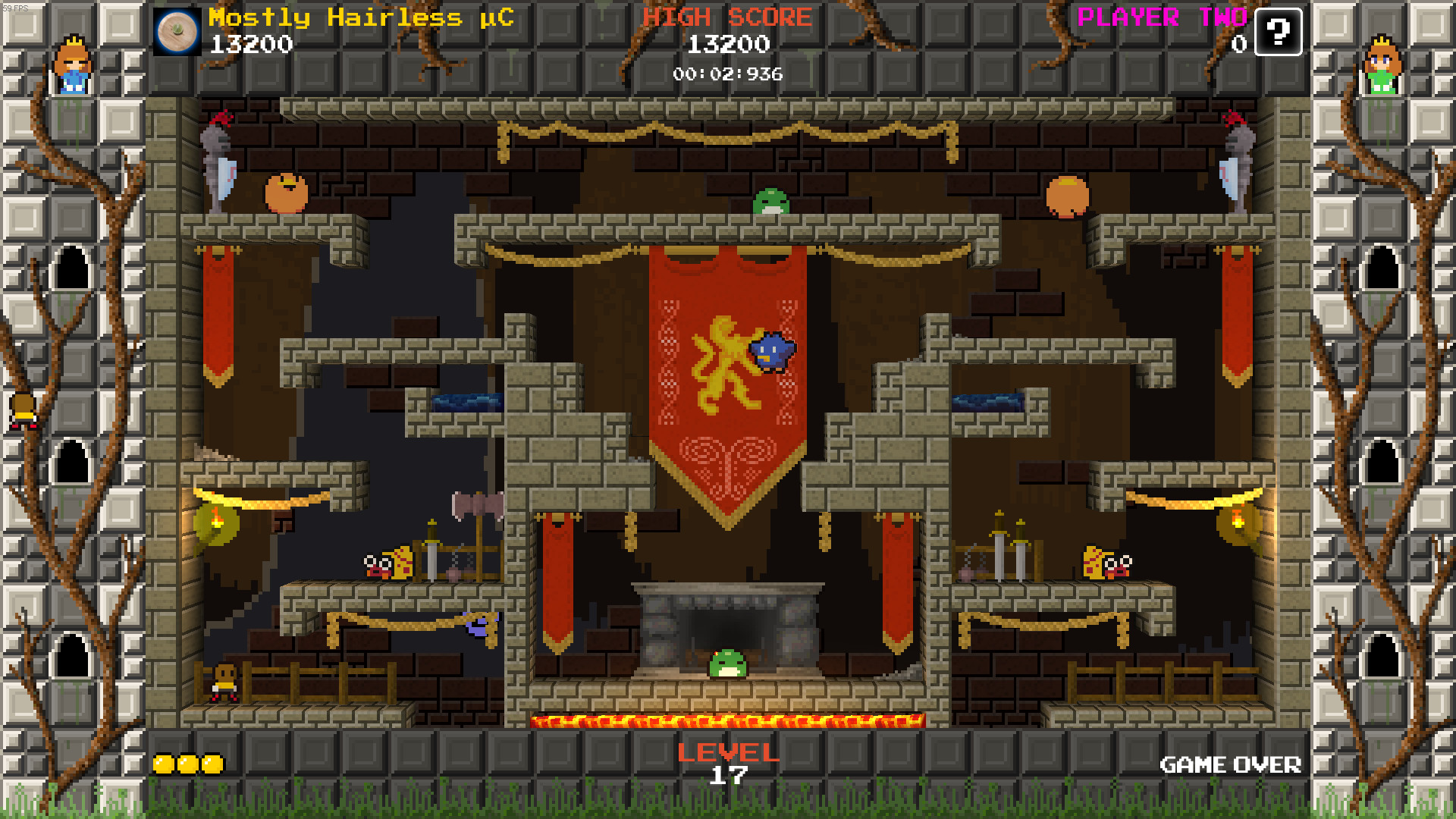| Mission Thunderbolt | |
|---|---|
| Basic Information | |
| Video Game | |
| Dave Scheifler, John Calhoun | |
| Casady & Greene | |
| Casady & Greene | |
| Jaunt Trooper | |
| Roguelike | |
| DEC, Mac OS and Microsoft Windows | |
| Retail Features | |
| Main Credits | |
| Dave Scheifler | |
| North American Release Date(s) | |
| 1992 | |
| Awards Changelog Cheats Codes Codex Compatibility Covers Credits DLC Help Localization Manifest Modding Patches Ratings Reviews Screenshots Soundtrack Videos Walkthrough | |
| Achievements GOG In-Game Origin PlayStation Trophies Retro Steam Xbox Live | |
Mission: Thunderbolt is a roguelike computer game with a futuristic storyline. It was originally developed and released on DECmainframes as Doomsday 2000, a four-part game, and later ported to both Mac OS and Windows. Mission: Thunderbolt is part 1 of the Jaunt Trooper series and was released on both Mac OS and Windows. Part 2, Mission: Firestorm, was only released for Mac OS. The game was one of the first commercially released roguelikes. It put a graphical front end and a full set of sounds in place of the ASCII text traditional to roguelikes. It was also unique in the sheer number of actions/interactions possible. Being closed source, many mysteries of the game were never fully resolved.
Mac Operating System Mac OS X Item Weight 2.38 pounds Product Dimensions 7.56 x 11.8 x 0.68 inches Item Dimensions LxWxH 7.56 x 11.8 x 0.68 inches Color Silver Processor Brand Intel Processor Count 1 Computer Memory Type DDR3 SDRAM Flash Memory Size 128 Optical Drive Type No Audio-out Ports (#) 1 techspecbatterydescriptiontoys. Subnautica Below Zero PC Game with all files are checked and installed manually before uploading, This PC game is working perfectly fine without any problem. Download the free full version of Subnautica Below Zero for Mac, Mac OS X, and PC. Subnautica Below Zero Game It Is Full And Complete Game. Just Download, Run Setup, And Install. IOS was previously known as iPhone OS, despite also being available on the iPod Touch (1st, 2nd, and 3rd generations) and the original iPad. IPhone OS 1 – derived from 'OS X' (At the time, 'macOS' was still known as 'Mac OS X' and not 'OS X' as it was known from 2012 to 2016.); iPhone OS 2; iPhone OS 3; iOS 4 – continued from iPhone OS 3; iOS 5; iOS 6; iOS 7; iOS 8.
- 3Gameplay
Historical background[editedit source]
The creation of this game began in late 1986 as a means for the author to learn the C programming language while working for DEC. It was developed under the VMS operating system on a DEC VAX mainframe computer; a VAX workstation was used in later years. The first version was released after nearly a year of development and testing to DEC employees world wide over the Internet in 1987; the author kept a large world map on the wall of his office and had a pushpin placed where ever a DEC office was known to have employees playing the game (there were lots of pins). Although titled Doomsday 2000, within DEC the game was known simply as Doom.
Doomsday 2000 was modeled along the lines of other popular mainframe computer games at the time, such as Rogue, Hack, and Larn, but was specifically designed to have much greater depth of game play and greater freedom with regard to interacting with the game world presented; these are aspects that set the game apart from all other mainframe games of that era. For example, you could bash down walls to gain access to otherwise seemingly inaccessible regions. One trick that was often used by players was to blow a hole in the floor above a particularly troublesome foe lurking on a lower level, then lob grenades through that hole to destroy the critter from relative safety, though some foes were clever enough to clamber up after the player character.
Another notable feature that was provided, and which may very well have been a first such instance for mainframe games, was the inclusion of special loadable bitmap fonts for various models of DEC's VT series video computer terminals. These fonts enabled the game to present actual little pictures of the monsters, loot items, and terrain features found in the game, instead of the simplistic number/letter representations (ASCII characters) used by other games at that time. So a 'bat' was shown with the image of a stylized bat, instead of the letter B.
Doomsday 2000 was initially conceived of as a four part-game with interlinked stories, each part being a special 'mission' for the heroic character (Captain Hazard) whose role people assumed within the game. Mission: Thunderbolt was the first of the missions, and it was the only mission in the 1987 release. This initial game was later expanded over time to also include Mission: Firestorm and Mission: Quicksilver. The fourth mission (Tsunami) never left the concept stage.
Casady & Greene published a version of the game's first mission as Mission: Thunderbolt for Mac OS in 1991. Few copies were sold and so was not a commercial success for its author.
The second mission was subsequently released by the author himself for Mac OS as JauntTrooper, Mission: Firestorm by way of a hobby, rather than a commercial venture, as was a Windows version of the first mission, JauntTrooper, Mission: Thunderbolt.
[This section contributed by Dave S., Author of Mission: Thunderbolt, September 2007]
Storyline[editedit source]
The world has been invaded by the alien race of the Zytts, and humans have created an underground resistance to overthrow them. In order to strike a vital blow against the invaders, the protagonist is sent to recover an anti-matter bomb that was stored in a military installation under the Appalachian Mountains.
The aliens however get there first and bring a lot of nasty creatures along with them to try and stop the human resistance from getting the anti-matter bomb.
Gameplay[editedit source]
There are sixteen regions in the game, plus twelve side levels called 'Warrens' and two detention levels. Each time a new game was created, most of the levels are randomly generated, allowing for replayability.
Items[editedit source]
During the game the player finds many different items that have various functions, such as wield, wear, throw, eat, open, close, activate, deactivate, etc. Some items have a use and some are completely useless, such as the 'pile of entrails' and the 'pile of rubble'. Other items have a use but you must be creative in order to find their uses.
Example 1: Characters often find bones that are lying around the compound. If given to a wild dog, they will become friendly and help by attacking enemies.
The player character starts the game with three items: a butcher knife, a damaged and unreliable laser pistol (listed as 'battered' in the inventory), and a black pill.
A unique feature in Mission: Thunderbolt is that at the start of each new game, the chances of acquiring different items is randomized, resulting in an item being exceedingly rare in one game and very common in another. The various creatures in the game were similarly randomized.
Strange Devices[editedit source]
Throughout the adventure, the player character will find many devices that are originally called, 'Strange Devices.' These devices are identified later on as one discovers their uses. These items can be identified at a library or by discovering their nature through trial and error. This can be done by trying different things with the devices, such as wearing, activating, firing the item, etc.
The Light Globe is the first 'Strange Device' found, usually on Level 2. This item will need to be charged with a power cell and then activated. The light globe will then give off extra light and illuminate the maze for several squares, allowing the player character to see things long before directly encountered.
Primary Stats[editedit source]
The game is loosely based on the Dungeons & Dragons system as far as your stats go for the character's strength, dexterity, constitution, etc.
Mac Os Catalina
Miscellaneous[editedit source]
Throughout the game one finds several other weapons and items to use in defense or to assist in progress through the levels of the game toward the goal at level 16.
Future Missions[editedit source]
Characters that complete the original mission can be imported into Mission: Firestorm, only available for Mac OS, despite Thunderbolt's release for the Windows platform as well.
Reception[editedit source]
Mission: Thunderbolt was awarded '4 Mice' by MacUser Magazine and was placed within the MacWorld 1992 Game Hall of Fame.
Mission: Thunderbolt was reviewed in 1993 in Dragon #189 by Hartley, Patricia, and Kirk Lesser in 'The Role of Computers' column. The reviewers gave the game 3 out of 5 stars.[1]
References[editedit source]
Notes[editedit source]

- ↑Lesser, Hartley, Patricia, and Kirk (January 1993). 'The Role of Computers'. Dragon (189): 57–62.
Clamber 2 Mac Os Download
Retrieved from 'https://gamicus.fandom.com/wiki/Mission_Thunderbolt?oldid=730217'
Is your Mac up to date with the latest version of the Mac operating system? Is it using the version required by a product that you want to use with your Mac? Which versions are earlier (older) or later (newer, more recent)? To find out, learn which version is installed now.
If your macOS isn't up to date, you may be able to update to a later version.
Which macOS version is installed?
From the Apple menu in the corner of your screen, choose About This Mac. You should see the macOS name, such as macOS Big Sur, followed by its version number. If you need to know the build number as well, click the version number to see it.
Which macOS version is the latest?
These are all Mac operating systems, starting with the most recent. When a major new macOS is released, it gets a new name, such as macOS Big Sur. As updates that change the macOS version number become available, this article is updated to show the latest version of that macOS.

If your Mac is using an earlier version of any Mac operating system, you should install the latest Apple software updates, which can include important security updates and updates for the apps that are installed by macOS, such as Safari, Books, Messages, Mail, Music, Calendar, and Photos.
| macOS | Latest version |
|---|---|
| macOS Big Sur | 11.3 |
| macOS Catalina | 10.15.7 |
| macOS Mojave | 10.14.6 |
| macOS High Sierra | 10.13.6 |
| macOS Sierra | 10.12.6 |
| OS X El Capitan | 10.11.6 |
| OS X Yosemite | 10.10.5 |
| OS X Mavericks | 10.9.5 |
| OS X Mountain Lion | 10.8.5 |
| OS X Lion | 10.7.5 |
| Mac OS X Snow Leopard | 10.6.8 |
| Mac OS X Leopard | 10.5.8 |
| Mac OS X Tiger | 10.4.11 |
| Mac OS X Panther | 10.3.9 |
| Mac OS X Jaguar | 10.2.8 |
| Mac OS X Puma | 10.1.5 |
| Mac OS X Cheetah | 10.0.4 |